- Learning time
- 20 minutes
- First play time
- 90 minutes
Legends of Andor
Designed by: Michael Menzel
Part-story, part-puzzle, all game, Legends of Andor challenges the players to play six legends – each one a mission – and prove themselves heroes of the mythical realm. Players work co-operatively, winning or losing as a group, but – as with the role-playing games that inspired it – everyone has a distinct role: warrior, dwarf, wizard, archer. You can play with less than four players as well; simply choose the characters that appeal to you.
The board shows Andor itself, with the castle the players are sworn to protect, the rural buildings, forest and mountain (the reverse of the board is also illustrated and used for one specific legend). You’ll notice it’s broken into smaller regions: this is because both the players and the monsters they fight spend time moving from region to region: time, in fact, is a key component of the game.
In each round – or ‘day’ – players get seven hours to spend. Traversing terrain costs one hour to move from region to region; although you can go as far as you have hours to spend, should you choose to. Waiting – doing nothing – costs an hour as well, although doing so can be tactically beneficial at times. And battling monsters costs an hour per round of battle. Why battling? Well, to go into much more detail gives away the narratives of the Legends, which are best experienced fresh; suffice to say though the rules are very simple and the first Legend deftly introduces you to the mechanics of the game bit by bit, so players young and old can feel immersed in the world very quickly.
At the end of each day, the players ready themselves for the next one, but before the sun rises again three things happen. First, there is an Event (again, we’re not giving much away about them but they’re extremely simple: flip an event card and apply its effects) then all the monsters shuffle toward the castle following the arrows on the board, and finally the legend marker moves.
The legend marker is – along with the actions of the players – what pushes the story forward. each legend must be completed before it reaches the end of the track, but as well as that, certain spaces prompt you to read the next Legend card in the deck, both revealing a little more about the story and amping up the stakes: bringing more monsters into play, as well as giving you – the collective you – objectives to complete in order to finish the legend and win the game.
The basic rules are really simple and the cards handle a lot of the game for you. Mixed into the fantasy are the battles themselves – we won’t describe them here except to say again they’re very easy to follow, including the option for a Team Battle, where you all fight at the same time! – the minor nuances of the individual characters, and the option – should you have the gold to spend – to upgrade your character with bows, shields, helms and so on. Much of this is introduced in Legend 2 though, by which time the additions don’t give a sense of overwhelm, but a sprinkling of herbs on top of a roast dinner of a game.
The guru's verdict
-
Take That!
Take That!
None from other players, although the game - engineered against you - can contain the odd sting.
-
Fidget Factor!
Fidget Factor!
Low to non-existent. Your success in Andor relies on good teamwork, so players calibrating their movements and plans is a key part of the experience, where the (presumably) resident grown-ups help steer younger kids to good decisions, rather than deciding everything for them!
-
Brain Burn!
Brain Burn!
The rules are extremely light, especially compared to some fantasy-themed games. The challenge is the round-by-round tactics of completing X and Y objectives whilst making sure Z doesn't happen in the meantime. Good teamwork is crucial!
-
Again Again!
Again Again!
Each Legend plays 'the same way' in a large sense, but there's variation in the order of events, the battles and the narrative elements added by the Legend cards. So although knowing what lies ahead compromises the surprise element of each Legend, it doesn't make each play predictable.

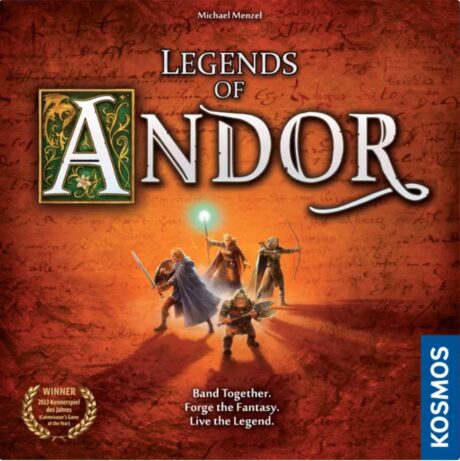
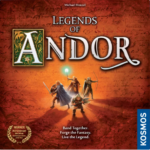
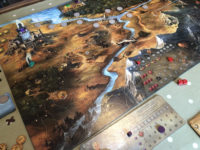
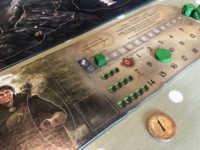
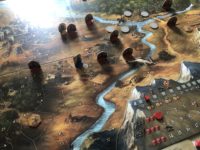
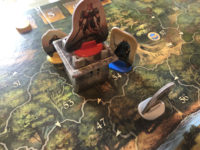


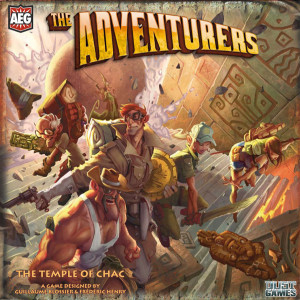
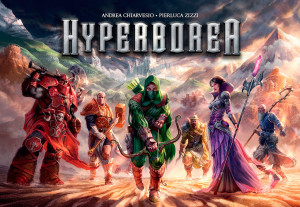
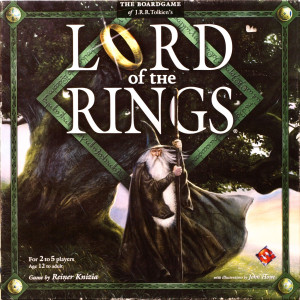
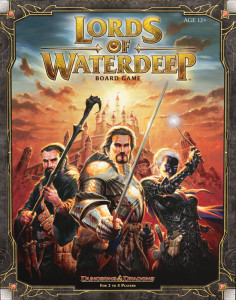
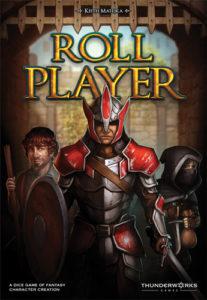
Sam says
I'm not usually drawn to fantasy themes, but I confess I have really enjoyed Legends of Andor. Whereas the heavier games of this ilk start to bow under the weight of their own rules and procedures, Andor is a game that settles for light, fast-moving fun over chart-referencing, multiple phases and complex ranged and melee procedures for battle. Not that it's simple: there's a brevity to play that gives Andor a kind of more-ish feel, especially the Tolkien fans (other authors available etc) who still dream of being Aragorn. But - and here's where players who yearn for the kind immersive story offered by role-playing games might be slightly put-off - Legends of Andor also gives a sense of puzzle. Knowing what's coming in each legend - if you replay one you've already experienced - is an advantage, but it by no means makes it 'solvable' in any definitive way. I think what I like best though is - assuming you avoid the alpha player problem (games are best experienced without an alpha player making decisions for everybody!) - the agency each player has in achieving the objectives, defeating the foes and living out the legend in question. A younger player might not grasp the finer intricacies of tactical planning, but they can feel as though they have crucial role when the matters in hand are tasks such as get X to the castle! explore the river! or even just stop the bad guys! and, hey, what's more fun than adventures?